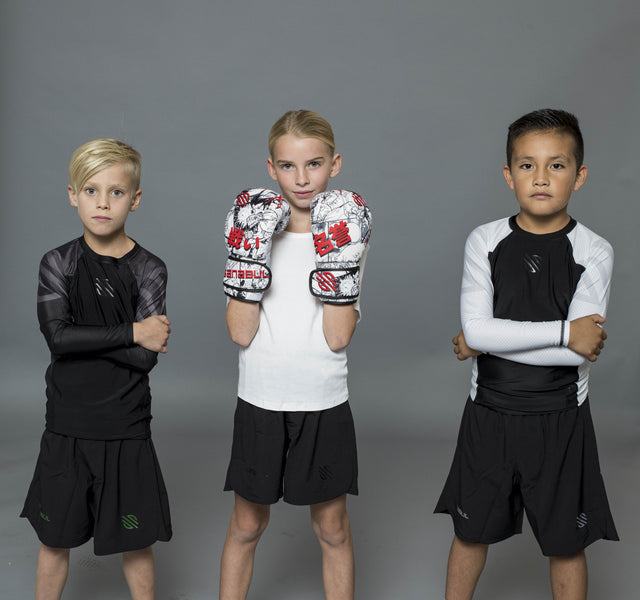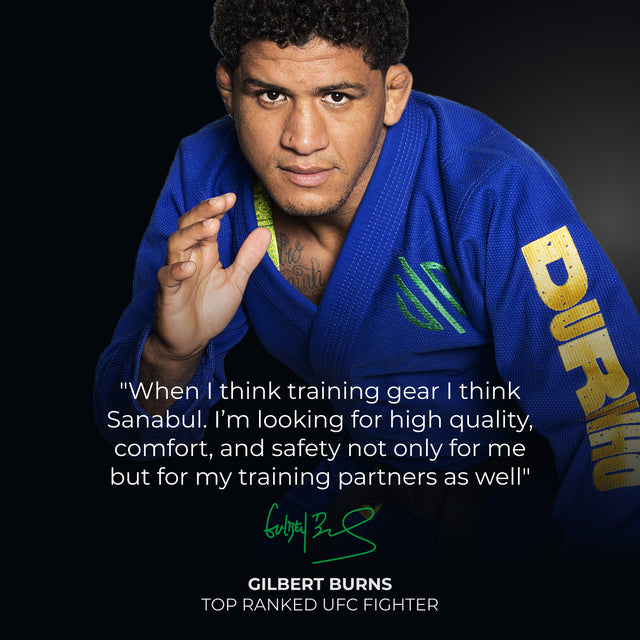Kids in Combat Sports
As combat sports become more mainstream, the amount of people who train martial arts is expected to increase. This could be due to a number of reasons (wanting to: be a fighter, get in good shape, learn self-defense, etc), but it is safe to say that the popularization of combat sports organizations like the Ultimate Fighting Championship (UFC) and ONE Championship has helped lead to this growth.
People of all backgrounds, body types, and ages have united together in gyms for one purpose: improving their fighting skills. As televised combat sports become more common and accessible to the public, more and more people join gyms to learn these types of skills. This is absolutely great to see, as practitioners get to experience the benefits that combat sports training offers. Practitioners get to:
- defend themselves and others
- increase self-discipline, self-control, and self-confidence
- improve and maintain overall levels of fitness and agility
- build mental and physical strength (stronger mindset + more functional strength)
- stay composed and not quit when situations get difficult
- find a deeper sense of community with teammates and others in the gym
We hope everyone gets to experience these benefits from training, at least once in their life!
While these are awesome benefits to experience, there is debate around whether or not one group of people should be training: kids. Like with everything else in life, there are two sides to the equation: positives and negatives of kids training in combat sports. Let’s take a look at them.
Benefits of Kids Training in Combat Sports
In addition to the list above, there are other benefits that kids can experience from training in combat sports. The controlled gym environment that is (hopefully) always being supervised by a qualified instructor can allow a child to get good fighting experience, in a safe setting. They get to learn techniques for self defense and interact with others their age: a great way to meet new people and make friends.
This activity will keep them off of screens and devices for a good chunk of time and get exercise in a fun way. In today’s age, kids seem to be getting exposure to devices like phones and computers at earlier and earlier ages. Allowing them to give their eyes and neck a break from looking down at screens and get active can be the reset they didn’t know they needed.
Another thing that they will experience, without knowing it, is the building of the mind. During training, things won’t always go their way - this happens with fighters of all levels (beginner, amateur, professional, and even world champions). It is at these points that they will develop the mentality to not give up, control their emotions, focus on completing the task at hand, and bounce back when they fail (resilience). These characteristics are directly transferable to any situation in life, which is why training can help prepare them and develop this way of thinking to be their minimum standard. Staying composed in stressful situations and focusing on finding solutions will allow their creativity to flow. They will learn how to adapt to their environment and make the best of whatever situations they find themselves in.
Risks of Kids Training in Combat Sports
While there are certainly great benefits that adults and kids can experience from combat sports training, there are risks involved. Most notably, the risk of injuries.
In any grappling sport, you are manipulating the body in uncomfortable ways. If a child is on the receiving end of this, they may develop injuries that may require medical attention and/or last for any duration of time. Tearing and damage to tissue, tendons, ligaments, muscles, and even nerves (in some cases) can happen. The breaking and fracturing of bone, as well as hyperextension of joints can also occur. Children who sustain these types of injuries might have to deal with the consequences of these injuries if they sustain them at a young age.
In martial arts that focus on striking, the main concern is the damage they absorb. Impact to the body is usually okay for kids because the power on the strikes from other kids is usually not powerful enough to break or fracture bones – however, it can happen which is why they must be cautious. Impact to the head is what should be watched for. Even for adults, absorbing damage to the head is not good for your health. When you get hit in the head, your brain rattles around inside your head. For children whose brains won’t fully develop until around the mid-twenties, the amount of damage they take to the head should be extremely limited - if any at all. Any gym that allows kids to take and give strikes to the head should be aware of these risks and make the guardians aware of these risks. Fortunately, most gyms will not allow strikes to the head in their kids programs.
Analysis: Is the risk worth the reward?
The benefits are definitely amazing, but the risks and potential consequences to the still-developing bodies/brains of children are concerning. So what should parents do?
We believe that everyone should start martial arts as soon as they can. Kids are no exception. Martial arts training is extremely, extremely valuable for practitioners due to the positive effects it can have on physical and mental health. Children who train martial arts develop self-defense skills and mental discipline at early ages. Growing up with this experience shapes who they will be as a person in the future.
To avoid the potential consequences, it is important that parents and guardians find a gym that has qualified instructors who have experience with navigating the risks of training and teaching martial arts. When looking for a gym, don’t be afraid to ask questions and take a look for yourselves – you are making an important decision for the safety of your child.
Children should be slowly introduced to techniques and gradually increase their training intensity over time. As they spend more time in the gym and improve skill-wise, their self-control and awareness will increase. They will understand their capabilities and limits from their own experiences, which means they will know how to stay as safe as possible during training. For the safety of themselves and their training partners, make sure children train in a safe and controlled manner under the supervision of a qualified, knowledgeable instructor.
Thank you for reading - we hope this article effectively weighs the benefits and risks of combat sports training for children!





1 Comment
So can kids fight crime